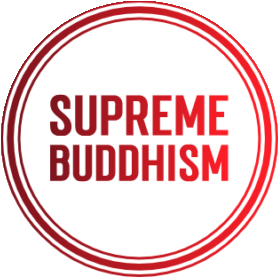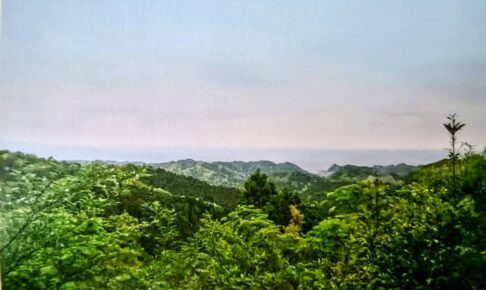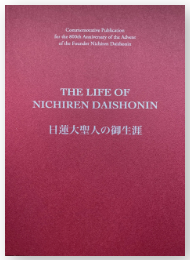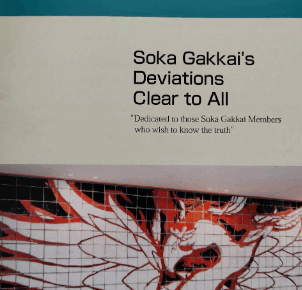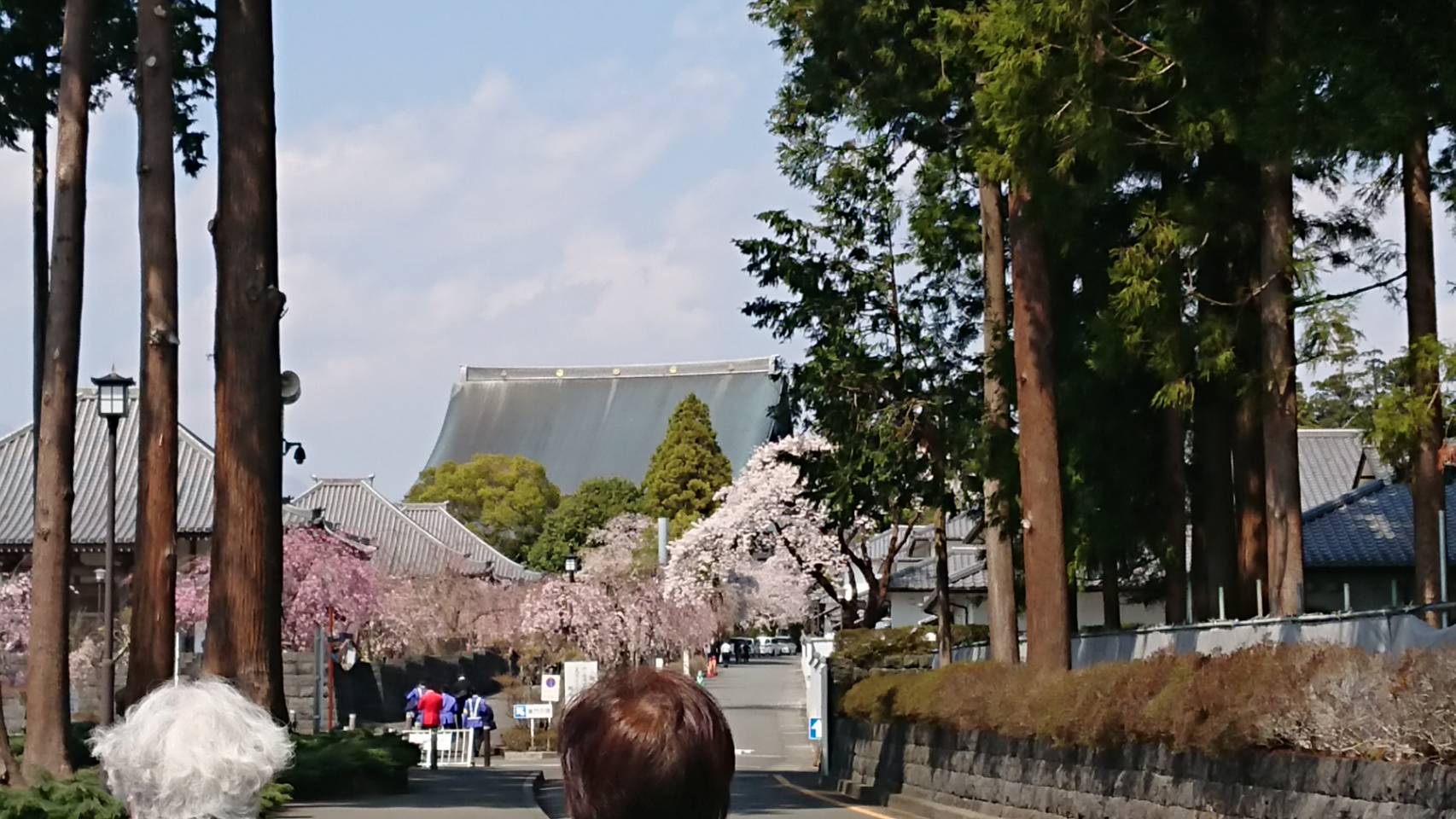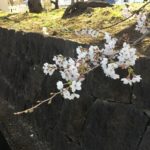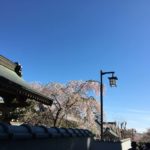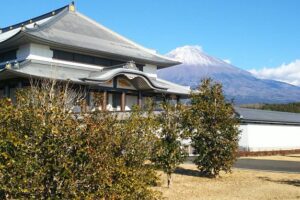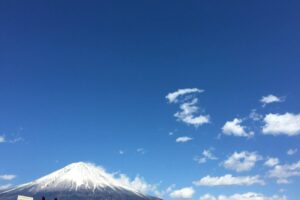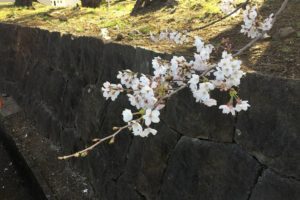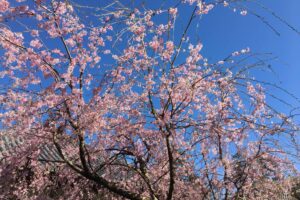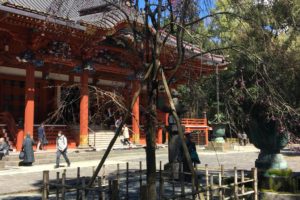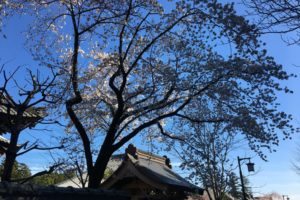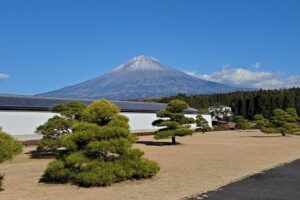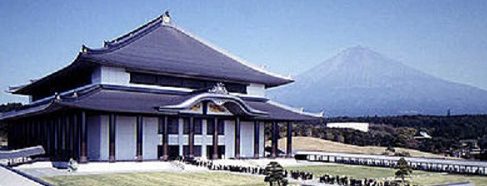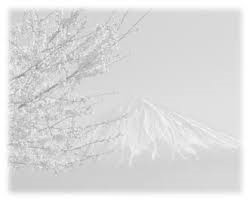In the third stage of the Rissho ankoku ron, the visitor responded to the master’s answer that the “three calamities and seven disasters were caused by the permeation of heretical sects and doctrines.” Thereupon, the visitor retorted that the people throughout Japan revered Buddhism, that there were numerous Buddhist temples and that there were innumerable priests who put forth a great deal of effort in training and study.He discussed how Buddhism had spread throughout the country.He then asked how Buddhism and the Three Treasures of the Buddha, the Law and the Priesthood could become obsolete, when so many people upheld them.
In response, the master instructed that, although there, indeed, were numerous temples and countless priests, they represented heretical sects that slandered True Buddhism. Because of this, peace could not reign in society.To make matters worse, one calamity after another occurred without reprieve.
The fundamental difference between the thoughts of the master and the visitor was that the visitor focused on the formalities while the master embraced the essential truth of the situation.
The thoughts upheld by the visitor are the same general perceptions held by people today. Indeed, there are temples galore of various sects throughout all areas of Japan.There are innumerable priests who perform rituals such as funerals and memorial services on a daily basis.There are many people who worship at these temples.Based on this, we can, indeed, say that Japan is a country where Buddhism thrives.
These formalities, however, do not define True Buddhism.To uphold Buddhism, we must correctly teach the doctrines of the Buddha to bring salvation to all people.If we do not correctly teach the essential truth of the Buddha and if we are consumed by a partial understanding of the teaching, we will ultimately promote a doctrine that opposes the Buddha ‘s intent.Even if the formalities of the temples, Buddhist statues, scriptures and priests exist, we cannot characterize these as Buddhism.
Shakyamuni, who was born in India , expounded a tremendous number of sutras-as many as 80,000 precious units-over a lifetime period of fifty years.After Shakyamuni’s passing, Buddhism traveled from India to China, Korea and Japan. During this process, numerous masters and teachers appeared and created various secrets of Buddhism.
Based on their personal preferences, these masters and teachers selected their favorite sutras from among the huge number of Shakyamuni’s teachings. They then constructed the doctrines for an entire sect by using their favorite sutra as the core teaching.As a result, there was an entire crop of sects, upholding completely different doctrines, being ubiquitously established in utter confusion.
In His Gosho, “Questions and Answers on Embracing the Lotus Sutra “(Jimyo hokke mondo sho), Nichiren Daishonin presented the following strict admonition:
If we merely rely upon the commentaries of the various teachers, and do not follow the statements of the Buddha himself, then how can we call our beliefs Buddhism? To do so would be the height of absurdity! (Gosho, p. 294; MW-5)
Accordingly,Nichichiren Daishonin Keenly pointed out that all the Buddhist demonstrations of His time, which proudly flaunted their influence and prosperity,
were utterly heretical sects. These sects were based on the whims and fancies of their founding figures and totally opposed the essential will of Shakyamuini. The Daishonin declared that True Buddhism did not exist under these conditions.
Nichiren Daishonin presented the criticism that although Buddhism superficially seemed to thrive because of the many great temples and numerous priests, in truth, Buddhism did not really exist in Japan.Many people resented this view and found it difficult to understand the Daishonin’s perspective. In fact, the Daishonin was vehemently accused by these narrow-minded people of rejecting His own precious denomination and was even targeted for angry reprisals.In this question and answer exchange, the visitor made this apparent, when he flushed with anger and defiantly stated: “How .can anyone say that the teachings of the Buddha’s lifetime are despised or that the Three Treasures of Buddhism have ceased to exist?
“The most essential standard to distinguish truth from heresy in Buddhism is revealed in the Nirvana Sutra:” Follow the Law and not the person. “What is the Law? It is none other than the correct teaching and object of worship that will lead all people to enlightenment.People who ignore these and uphold heretical sects are completely overcome by superficialities such as the large number of followers, the grandiose appearance of the buildings, and the colorful history that a sect may possess. Many people are totally immersed in these heretical sects and doctrines and are suffering as a result, but they are completely unaware of their conditions, The hearts of the people are confused and disarrayed, and this, in turn, leads to disorder in the nation and in society.
Nichiren Daishonin referenced the documentary proof contained in three sutras: “The Sutra of the Benevolent King” (Ninno), the Nirvana Sutra, and the Lotus Sutra. He declared that in the Latter Day of the Law, there are superficial forms of Buddhism.There are plenty of heretical sects and doctrines that oppose the true will of the Buddha.The Daishonin taught that such heresy is the very source of the devastating suffering and calamities experienced by the people.It is at the heart of the “karmic cause for the destruction of Buddhism and of the nation.”
There is no doubt that such heretical sects and doctrines are false, negative friends of Buddhism. They are the karmic causes for the destruction of Buddhism and of the nation.If the world continues to amass negative ca uses through this heresy, it will inevitably suffer the unfortunate karmic consequences.This is based on the strict Law of cause and effect.
Thus, it is essential for us to realize that, since we are aware of this, we possess a great responsibility toward The people.For the sake of those who are writhing in pain and suffering, amidst overwhelming hardships and confusion which they cannot fathom and from which they cannot escape, we must teach even a word or phrase of the one and only True Teaching of the Daishonin .
The following is a passage from the “Teachers of the Law” (Hosshi-10h) Chapter of the Lotus Sutra:
My good men and women, you must understand that if, after my passing, you competently and quietly teach even a single passage As agents of the Buddha, you will perform the deeds of the Buddha. Indeed, you must place yourselves among the masses and expansively expound the Lotus Sutra for the sake of all people. (Kaiketsu, p. 321)
In His Gosho, “The Selection of the Time” (Senji sho), Nichiren Daishonin wrote:
One who wishes to study the teachings of Buddhism must first learn to understand the time. (Gosho, p. 834; MW-3, p. 79)
Now is the time for us to accomplish “one shakubuku per person per year, “in order to actualize the directions given to us by High Priest Nikken Shonin. He has instructed us to” achieve an exponential increase in the number of our friends, the fellow Bodhisattvas of the Earth, and to accomplish an even greater emergence of individuals of talent, so as to promote peace and tranquility in the nation, based on the solemnity and dignity of this great Buddhism and the True Law. “
